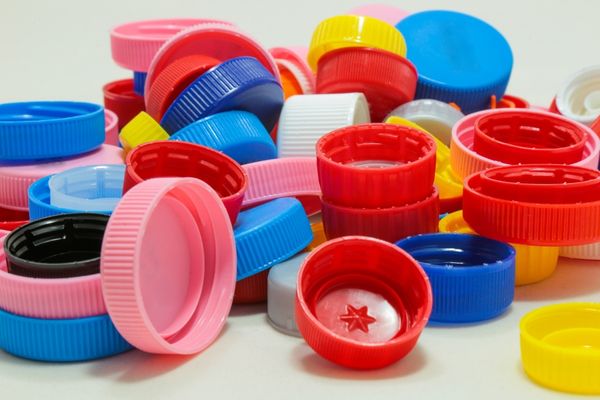Bottle caps have to be one of the items with the most confusing recycling rules. Leaving many of us wondering the question, “can you recycle bottle caps?”
The fact that there are so many different types of caps and lids can cause a lot of uncertainty. For starters, there are several varieties of bottles, including glass, plastic, and even ones made of metal. Then there are the various materials used to make the caps, like metal or plastic. Add to it the fact that the rules might vary depending on where you live.
It’s no wonder we are all still trying to figure out if we can recycle our bottle caps and lids.
Although they seem small, bottle caps have a significant environmental impact. They are one of the top ten items found during beach cleanups. And the problem is unlikely to go away in a hurry as sales of plastic water bottles are still increasing. In America alone, 2.5 million plastic bottles are used each hour, each of which has a bottle cap. By recycling, we can reduce the amount of plastic waste created and prevent further damage to our environment.
We will take a closer look at the different bottle caps below and then give you a straightforward set of steps to help you work it out.
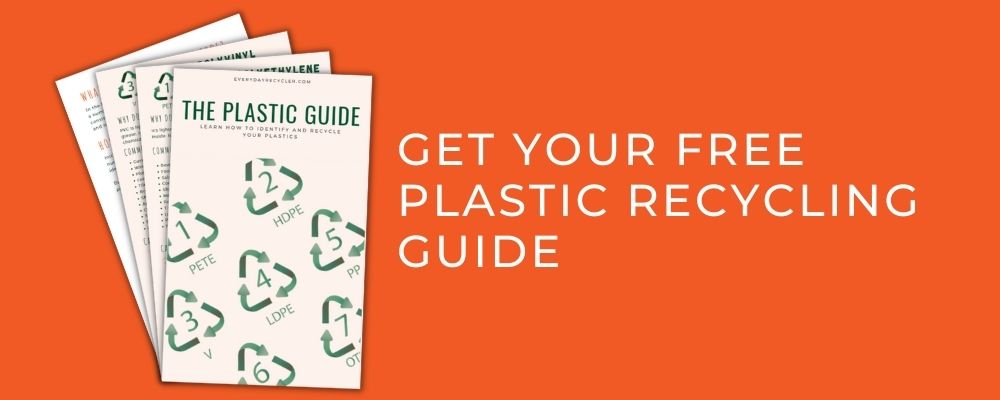
What are bottle caps made from?
Bottle caps or lids are made from two main types of materials, metal, and plastic. But when we take a closer look there are actually different types of plastic and metal that are used.
The choice of using metal versus plastic caps is with the manufacturer. They consider many different things, from the material used for the bottle, the type of contents, whether the cap needs to be reusable, how much of a seal is required to keep the contents fresh, and the safety requirements.
Below we take a closer look at each of these primary materials.
Types of plastic used to make bottle caps
Bottle caps are commonly made from two types of plastic: polypropylene (plastic number 5 plastic) and high-density polyethylene (plastic number 2 plastic). You will see the plastic resin number 5 or 2 in the chasing arrows symbol.
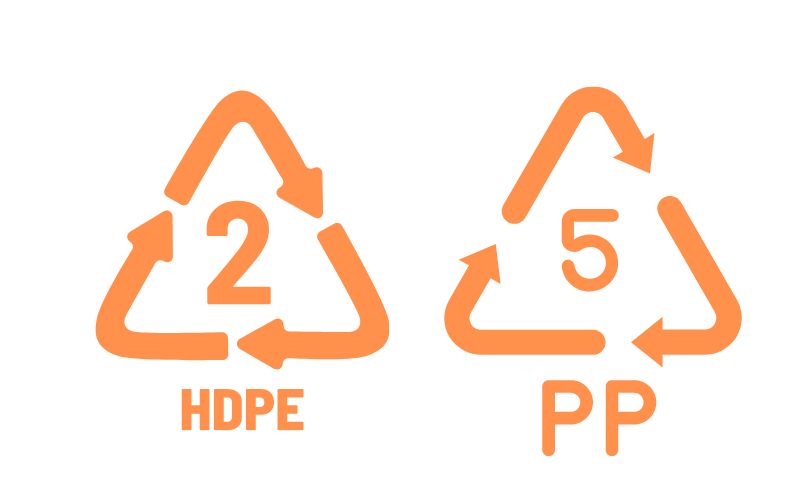
You can learn more about the different plastic numbers and whether they can be recycled here.
Polypropylene plastic is a lightweight, durable plastic often used for containers, packaging materials, and parts that require flexibility, while high-density polyethylene is a strong and sturdy plastic commonly used for items like bottles and jugs.
Both types of plastic are recyclable, but the recycling process for each type is different – this is why it’s important to check the plastic resin symbol on your bottle cap. But more on how to recycle plastic bottle caps later.
Types of metal used to make bottle caps
Metal bottle caps are typically made out of two different types of metal: aluminum and steel. Aluminum is a lightweight, malleable metal that’s used in bottle caps because it resists corrosion and is easy to shape.
Steel is more durable than aluminum but heavier and stronger, making it a good choice for some bottle caps.
Both metals are recyclable and can be reused, making them a great eco-friendly option for packaging. You can learn more about metal recycling here.
What about the liners in bottle caps?
Even though your bottle cap might be made from metal, it might still have a plastic liner. Liners are added to bottle caps to help create a seal and form a barrier to protect the contents. This is a good thing because we don’t want the product going off or flat. Liners are usually made from a plastic foam like polyethylene or HDPE but may be made with layers of pulpboard, wax, foil, or other plastics. They usually cannot be recycled.
Why Are Bottle Caps So Hard To Recycle Normally?
Bottle caps are a problem to recycle because they are made from a different type of material than the bottle, making them difficult to separate and process. This leads to contamination at recycling centers, making it more costly and resource-intensive to dispose of them.
Lone plastic or metal tops have almost no chance of making it through the sorting system on their own. They’re usually too small or too flat, and they fall through the cracks of the machinery. Leaving caps on can be a good solution; however, it depends on what sort of machinery is available at your local processing facility.
In some scenarios leaving the lid on the bottle can pose safety issues, as they can shoot off at high speeds when the bottles are crushed for transport. This is why some locations still request that you leave lids off and don’t put them in your recycling bin. However, many facilities have found a way around this issue and now recommend that you put the bottle cap back on the bottle before you put it in the bin. It really does depend on where you live, so checking your local rules is really important.
Why is recycling bottle caps important?
Bottle caps may seem small, but they can have a significant impact on the planet. Recycling bottle caps is important to help minimize the amount of plastic in the environment and protect wildlife. An estimated 20 million bottle caps are found during beach cleanups each year. These plastic caps can travel large distances and will take hundreds of years to decompose. When they do, they will likely break up into smaller and smaller pieces polluting the environment with microplastics.
The most commonly found trash on beaches is fishing gear, plastic bags and utensils, balloons, cigarette butts, and bottle caps. Bottle caps are particularly dangerous to marine life, as they can be ingested and cause a condition known as “bubble butt,” which causes sea turtles and other animals to float on the surface and either starve or become easy targets for predators.
In a landfill, bottle caps and lids will take just as long, if not longer, to break down, but at least they will be contained. However, the better solution is to recycle them. Recycling bottle caps can reduce the amount of plastic in the environment and help to protect aquatic life.
- Reducing pollution – Recycling helps reduce the amount of plastic that ends up in our oceans and waterways, where it pollutes the water and harms marine life.
- Saving energy – It also requires less energy to process recycled plastic or metal than it does to produce new plastic products.
- Keeping materials in use – Recycling bottle caps helps to keep materials in use and out of landfills and other disposal sites. This eliminates the need to produce new plastic or metal and increases the likelihood that the recycled material will be reused, saving resources and reducing energy usage.
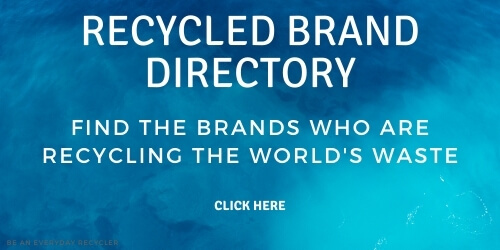
How to recycle bottle caps
Plastic versus Metal bottle caps
When it comes to recycling bottle caps, plastic and metal have different requirements. Metal bottle caps can often be thrown in the recycling bin without any issue since they are mostly made of recyclable metals that can be sorted more easily. Plastic bottle caps, however, are usually made of a different type of plastic resin than their bottles and are often too small to be identified during the sorting process. This means that plastic bottle caps often end up in a landfill instead of being recycled.
Check local recycling guidelines to confirm what kinds of caps can be recycled
The most important step is to check with your local authority or curbside service provider to see if they accept metal or plastic caps.
Plastic bottle caps are generally recyclable, but your local recycling provider may require you to keep them on the bottle or take them off before recycling the bottles. You should check for rules regarding whether the service provider wants you to remove the lids or keep them on the bottles.
Be aware that these rules have been changing a lot recently, so it’s important that you check now and re-check regularly in case the rules change.
How to recycle metal bottle caps
For metal caps, it’s important to check with your local provider if they accept them. Some facilities simply cannot process them because of their size. If they do accept them, it’s a simple matter of dropping them into your curbside recycling bin before collection.
If not, you might consider collecting them and dropping them off at a metal scrap yard. You might even get a dollar or two out of it. To make it easier at the scrapyard, it’s a good idea to sort your metal bottle caps by metal type.
How to tell the difference between aluminum and steel? You’ll need to do a simple magnet test to tell the difference between aluminum and steel bottle caps. Place a magnet on the bottle cap. If it sticks, then it is made of steel. If the magnet does not stick, then the bottle cap is made of aluminum.
Once you have sorted your bottle caps, you can collect them in cans of the same material. That way, it will be easier to simply drop off the can at your local metal scrap yard.
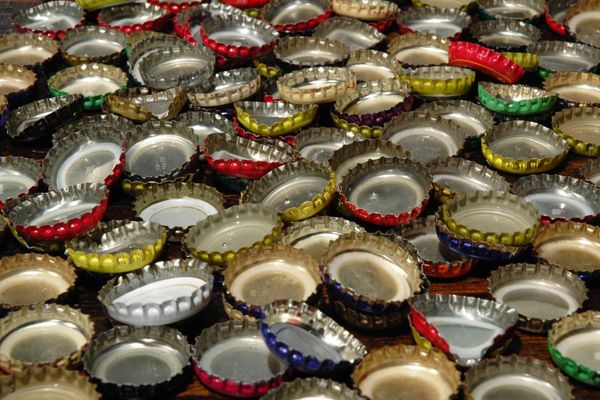
How to recycle plastic bottle caps
Caps are usually made of a different type of plastic than their bottles. Most caps are made of polypropylene (plastic #5), with some (like sports drink bottles) composed of high-density polyethylene (plastic #2). Plastic bottles and jugs are typically plastic number #1 or #2. In plastics recycling, resins must be separated before they can be processed because they have different melting points. While Polyethylene terephthalate (PET) can be easily recycled into new water bottles and other products, HDPE has to go through a more complicated process that not all recycling plants are equipped to handle.
Because of their small size, caps are unlikely to make it through the sorting process and they usually wind up being sent to landfill instead. It used to be standard procedure to recycle them separately, if at all. In fact, many locations simply did not accept lids and caps. Unfortunately, this is still the case for some locations, so it is very important that you check your local recycling rules.
However, in many places, recyclers are now recommending that consumers replace caps and lids on plastic bottles and containers before they recycle them. This is part of an effort to increase the amount of material collected and to avoid sending consumers conflicting messages.
Technological developments mean that during the recycling process, bottles are now shredded before being washed. During the washing stage, the different plastics can be separated because they have different densities, some will float, and others will sink. This allows the different types to be collected and used to make new products.
The video by PetStar below demonstrates how this process works.
Of course, you should definitely check with your local recycling program to make sure you know what their instructions are.
Be aware not every curbside recycling service has the same rules. There are still many programs that require you to remove the cap altogether. Check with your local recycling facility to determine if they accept bottles with caps on or off. Here are the steps for recycling depending on your service provider:
- Option 1: Check with your local recycling facility to determine if they accept bottles with caps on or off.
- Option 2: If they accept bottles with caps on, remove the lid to make sure all the liquid is emptied, and then place them back on. Then place the bottle into your curbside recycling bin.
- Option 3: If they accept bottles with caps off and the cap separately then simply empty the bottle, give the cap a quick wipe, and then place both the bottle and the cap in your recycling bin.
- Option 4: If they do not accept caps, then empty the bottle of liquid and place it into your recycling bin. Either throw the cap in the general waste or, better still, find a specialist recycler. Refer below for some ideas.
If you are unsure, always ask your local recycling facility about their policy.
Other options for recycling bottle caps
If you have a lot of plastic bottle caps and lids left over, there are a few options for recycling them. You can take them to your local recycling program and see if they accept caps and lids.
You can try contacting a company like Green Tree Plastics in the USA, which offers an educational ABC Promise Partnership Program and manufactures items from recycled plastics. You could also try Lids for Kids in Australia, a non-profit keeping lids out of landfill.
Another option is Precious Plastic, an open-source initiative that provides tools and support for establishing small-scale recycling centers to process and produce new items.
There are plenty of other ways to reuse your bottle caps, but here are just a few ideas.
- Make a Coaster – You can make use of your collected bottle caps for several home decorations. For example, you can use them to make a coaster for your drinks.
- Make a Picture Frame – You can also make the bottle caps into a picture frame. Arrange the various colors and patterns to give it a unique artwork feel.
- Make Accessories – You can also use your bottle caps to make accessories like keychains or rings, and earrings.
Caps should be clean and free of contaminants.
For bottle caps to be recycled, they should be clean and free of contaminants. This means that the caps should be wiped off to remove any dirt or debris that could lead to it being rejected for recycling. Additionally, if possible, bottles should be crushed prior to putting the cap back on, as it helps to prevent the caps from shooting off at high speeds when the bottles are crushed for transport. When transporting the caps, they should also be free of liquid, although rinsing is not necessary for recycling. Finally, it is always important to follow the instructions of your local recycling program.
Frequently asked questions
Cap On Or Cap Off
Many rules now say to replace the caps on your plastic bottles but be sure to check what your local recycling program requires so you can recycle right.
Where else to recycle metal bottle caps
Metals bottle caps can be recycled through metal scrap yards or other specialist recyclers or collection points.
How Does The Recycle Facility Separate The Cap From The Bottle?
Bottles with their caps are ground up into flakes and then washed in water. The plastics have different densities meaning the lid material floats to the surface while the PET from the bottle will sink. This allows the various materials to be collected and recycled separately.
Why doesn’t my local recycling program accept caps?
There are several reasons why caps are not as commonly accepted as plastic bottles. Caps are usually made of a different type of plastic than their bottles, which can cause contamination at recycling centers if they are not properly separated. This costs more money and resources to make it work, so many programs opt not to bother. Additionally, some programs want to ensure that no liquid remains in the bottle, and the only way to do this is to remove the caps.
How are plastic caps recycled?
Once the plastic caps have been separated in a float tank the plastic, usually plastic #2 or #5, is melted and converted into pellets. It is then transported to a manufacturer for use in a new product.
What are recycled plastic caps turned into?
Recycled plastic caps can be turned into a variety of products. The plastic pellets can be used to make new plastic caps, casing for car batteries, storage containers, reusable plastic bags, and more.
What are recycled metal caps turned into
Recycled metal caps are turned into a variety of new materials. They can be recycled into new steel products such as beams, rebar, and wire, or into new aluminum products such as siding, window frames, and car parts. Metal caps can also be melted down and reused to create new aluminum cans or steel cans.
Want to find out what to do with other hard-to-recycle items:
- Can You Recycle Toothbrushes? How to Recycle Your Toothbrush
- How To Dispose Of A Microwave And Other E-Cycling
- Can You Recycle Plastic Hangers and what happens to them?
- Can You Recycle Sunglasses?
- Can Bubble Wrap be Recycled?
- Can You Recycle Books?
- Is Styrofoam Recyclable? How will we solve our Styrofoam problems?
Sources
- Fillmore Container Blog, 2022, When are Plastic Lids the better choice?
- Food Safety Works, Bottle Caps – What are they made from?
- Caprite, How are plastic bottle caps made?


